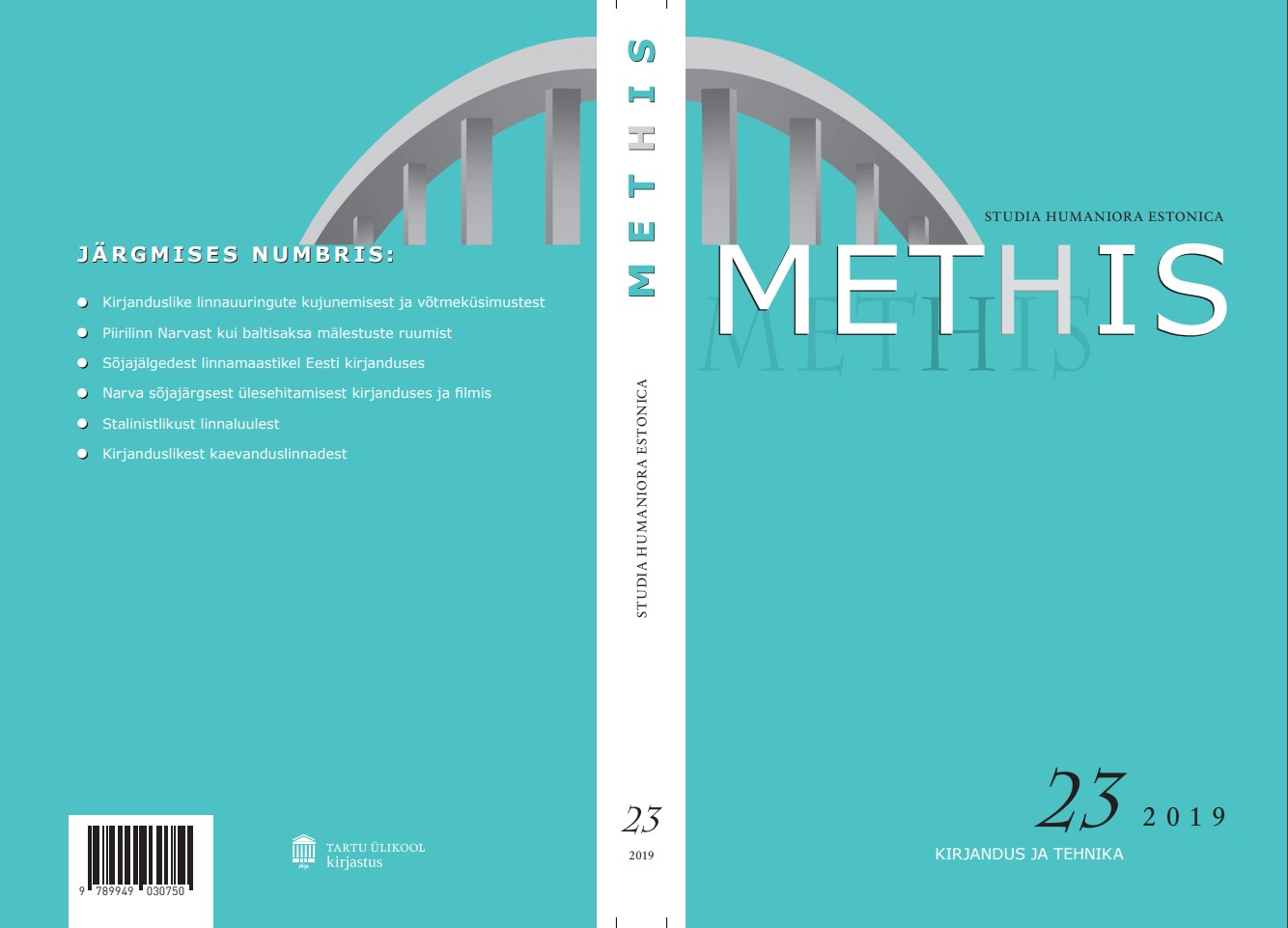Kirjandus, kontrapunkt ja cantus technicus / Literature, Counterpoint, and Cantus Technicus
DOI:
https://doi.org/10.7592/methis.v18i23.14800Keywords:
tehnika ja kirjandus, kontrapunkt, poeetika, D. H. Lawrence, Virginia Woolf, technology and literature, counterpoint, poeticsAbstract
Artikkel uurib tehnika representeerimise poeetilisi viise kirjandustekstides. Võttes kompositsiooniteooriast muusikas tarvitusele kontrapunkti mõiste, näitab autor, et iseäranis modernistlikes tekstides, kus tehnikat esitatakse sageli kas vastandlikuna loodusele või ängistavana tegelaste meeletundmustele, saame rääkida kontrapunktist kui poeetilisest võttest, mille eesmärk on eriomaselt rõhutada tehnika kohalolu ja kaalu tegelaste tunde- ja argielus. Autor väidab, et tehnika kui ühe pingestava „hääle“ – cantus technicus’e – tegelaste tundmus- ja kogemusvälja polüfoonsest häälterägastikust eristamine aitab meil paremini mõista üha jõudsamalt argiteadvusse hiiliva tehnilise ajastu loomulaadi ning sünkroniseerib lugeja mõjusalt senitundmatu modernsuse-kogemusega.
This article explores D. H. Lawrence’s and Virginia Woolf’s literary responses to modern technology by analyzing their most typical poetic ways of representing technology-related themes in their works. Since technology, in its various modern industrial forms, is generally depicted as being set against nature or otherwise estranging to Lawrence’s characters, it is suggested that it may be useful to explain his peculiar representational framework for technology via the concept of counterpoint. Indeed, by adopting the term from composition theory, it is argued that the contrapuntal approach to describing technology forms a distinctive literary device for Lawrence in an effort to communicate the “polyphonic” experiences of everyday technical consciousness of the “bewildering pageant of modern life” and thereby synchronizes the readers more effectively with the realities of industrial modernity. While adopting the counterpoint for tracing the technicity in Lawrence promises, perhaps, no overarching solutions, it nevertheless provides a viable literary model, and a novel perspective, for exploring “the dynamic interplay of tensions and contradictions” that technology typically triggers in the poetic creation of the experience in his texts.
While critics have found Virginia Woolf’s works exhibiting, perhaps, certain passivity in dealing with the themes of industrialism and technological machine, the article argues that there is, in fact, a very nuanced and rich position to be found on human relationship with modern technology in closer readings of Woolf’s works. Despite the fact that counterpoint as a literary technique has been noticed as forming a crucial method in advancing several important aspects in her works, viewing it as a device for extracting particularly modern technology and its many variants has not been researched in depth. By offering new techno-poetic readings of Woolf’s seminal works Mrs. Dalloway (1925) and Between the Acts (1941), the article shows that the contrapuntal approach, in analyzing the key passages, where technology genuinely affects the characters, proves to be a helpful method in making sense of the full impact of modernity in its many and varied aspects. The article identifies the appearances of cars and planes, for example, to represent predominantly Britain’s imperial power, which acts as a counterpoint to the diverse sensibilities of Woolf’s main characters.


